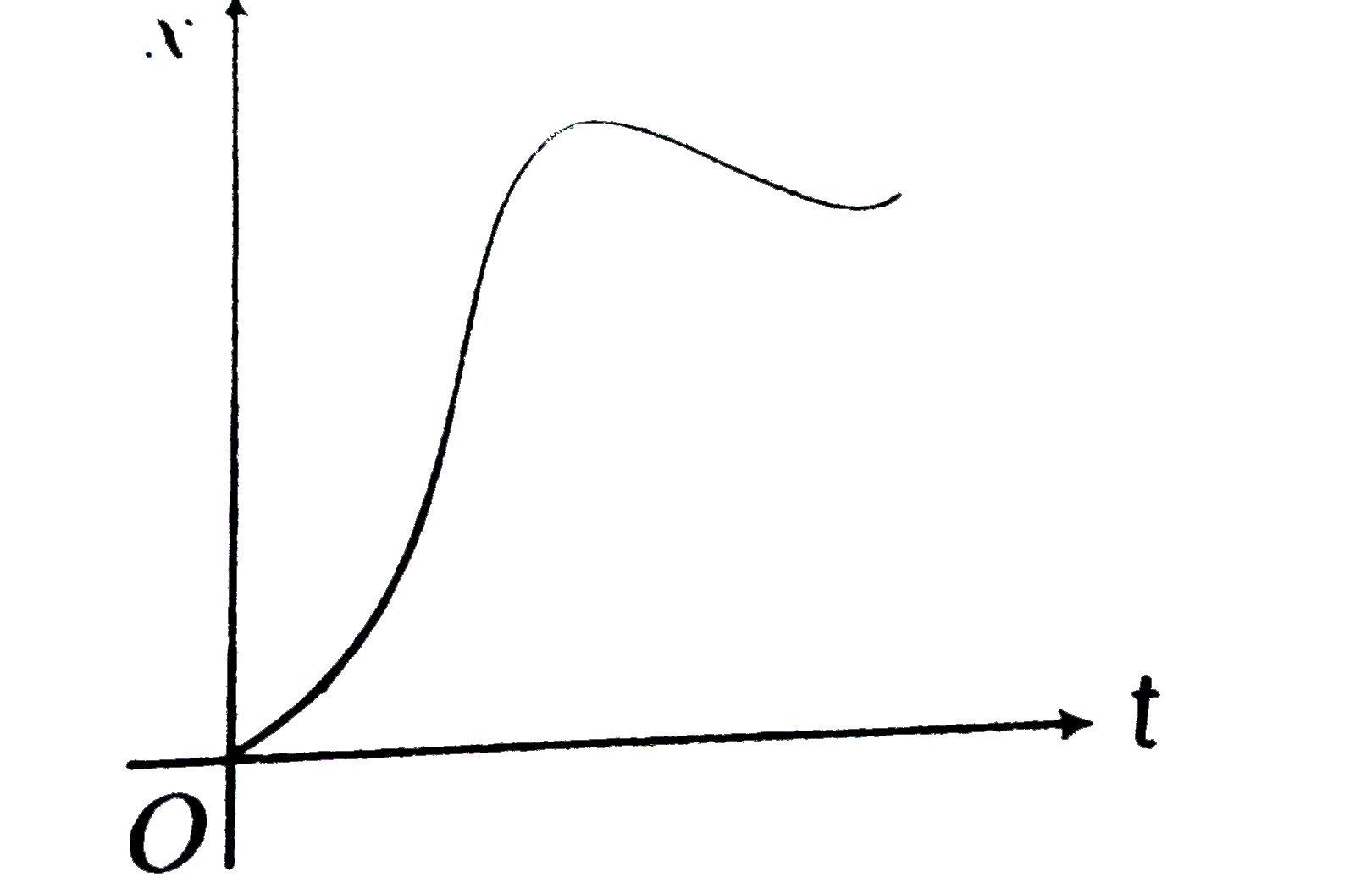The displacement time graph of a particle executing S.H.M. is shown in figure. Which of the following statement is / are true ?

The force is zero at t=3T4
The acceleration is maximum at t=4T4
The velocity is maximum at t=T4
The P.E. is equal to K.E. of oscillation at t=T2
The correct Answer is:A, B, C
For the given SHM, the displacement is given by y=acosωt
Velocity, V=dydt=−aωsinωt=aωsin(ωt+π)
Force = mass × acceleration =−maω2cosωt
Force is zero, when cosωt=0orωt=π2or3π2,i.e.,2πTt=π2or3π2
If 2πtTt=π2, then t=T4
If 2πTt=3π2, then t=3T4s (given)
Acceleration is maximum if cosωt=1orωt=0or2πor2πTt=2πort=T=4T4s
Velocity is maximum if sin(ωt+π)=1orωt+π=π/2
or ωt=π2−π=−π/2or2πTt=−π2ort=−T4s
PE=12mω2y2=12mω2a2cos2ωt
KE=12mω2a2sin2ωt
If PE=KE then cos2ωt=sin2ωt=sin2ωtorcosωt=sinωtortanωt=1
or ωt=π4or2πTt=π4ort=T8s
Topper's Solved these Questions
- OSCILLATIONS AND WAVESBOOK - PRADEEPCHAPTER - OSCILLATIONS AND WAVESEXERCISE - JEE mains adv..(multiple choice quection)
150 Videos
- OSCILLATIONS AND WAVESBOOK - PRADEEPCHAPTER - OSCILLATIONS AND WAVESEXERCISE - integer type question
8 Videos
- OSCILLATIONS AND WAVESBOOK - PRADEEPCHAPTER - OSCILLATIONS AND WAVESEXERCISE - Multiple Choice Question-I
21 Videos
- MATHEMATICAL TOOLSBOOK - PRADEEPCHAPTER - MATHEMATICAL TOOLSEXERCISE - Fill in the blanks
5 Videos
- PHYSICAL WORLD AND MEASUREMENTBOOK - PRADEEPCHAPTER - PHYSICAL WORLD AND MEASUREMENTEXERCISE - Competiton Focus Jee Medical Entrance
18 Videos
Similar Questions
Knowledge Check
The displacement - time graph of a particle executing SHM is shown in figure. Which of the following statements is//are true ?
 AThe velocity is maximum at t=T/2BThe acceleration is maximum at t=TCThe force is zero at t=3T/4DThe kinetic energy equals the total oscillation energy at t=T/2
AThe velocity is maximum at t=T/2BThe acceleration is maximum at t=TCThe force is zero at t=3T/4DThe kinetic energy equals the total oscillation energy at t=T/2The displacement -time graph of a particle executing SHM is shown in figure. Which of the following statements is/are true ?
 AThe force is zero at t=3T4BThe acceleration is maximum at t=4T4CThe velocity is maximum at t=T4DThe PE is equal to KE osc oscillation at t=T2
AThe force is zero at t=3T4BThe acceleration is maximum at t=4T4CThe velocity is maximum at t=T4DThe PE is equal to KE osc oscillation at t=T2The displacement-time graph of a particle executing SHM is shown in figure. Which of the following statement is/are true ?
 AThe focrce is zero at t=3T4BThe acceleration is maximum at t=4T4CThe velocity is maximum at t=T4DThe PE is equal to KE of oscillation at t=T2
AThe focrce is zero at t=3T4BThe acceleration is maximum at t=4T4CThe velocity is maximum at t=T4DThe PE is equal to KE of oscillation at t=T2
The displacement time graph of a particle executing an SHM is as shown. Which of the following statements are true?

View SolutionThe displacement time graph of a particle executing S.H.M. (in straight line) is shown. Which of the following statements is true?

View SolutionThe displacement (x)-time (t) graph of a particle is shown in figure. Which of the following is correct ?

View SolutionThe displacement (x) - time (t) graph of a particle is shown in figure. Which of the following is correct?

View SolutionDisplacement vs. time curve for a particle executing S.H.M. is shown in figure. Choose the correct statements

View Solution


